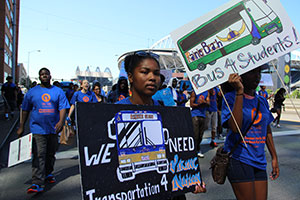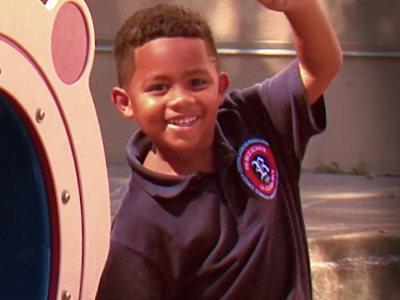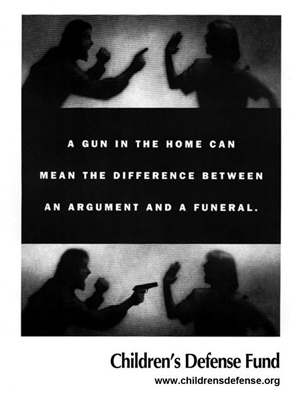Release Date: February 5, 2016

“Each of us is more than the worst thing we’ve ever done. My work with the poor and the incarcerated has persuaded me that the opposite of poverty is not wealth; the opposite of poverty is justice. . . . I’ve come to believe that the true measure of our commitment to justice, the character of our society, our commitment to the rule of law, fairness, and equality cannot be measured by how we treat the rich, the powerful, the privileged, and the respected among us. The true measure of our character is how we treat the poor, the disfavored, the accused, the incarcerated, and the condemned.”
--Bryan Stevenson, Author of Just Mercy and Executive Director of the Equal Justice Initiative
Bryan Stevenson’s inspiring and best-selling book Just Mercy shares some of the fruits of his lifelong fight to push our nation closer to true justice. In January our nation took two more steps forward in the ongoing struggle to treat children like children and ensure a fairer justice system for all, especially for our poor and those of color.
In 2012 Bryan Stevenson won the landmark United States Supreme Court case Miller v. Alabama banning mandatory sentences of life in prison without parole for children 17-years-old and younger. Until then the United States was the only country in the world that routinely condemned children convicted of crimes as young as 13 and 14 to die in prison. After that ruling most states that had sentenced youths to mandatory life sentences gave them the opportunity to argue for reduced sentences or apply for parole. Seven did not: Alabama, Colorado, Louisiana, Michigan, Minnesota, Montana and Pennsylvania. Three of these, Pennsylvania, Louisiana, and Michigan, accounted for more than 1,100 of the 1,200-1,500 inmates still imprisoned for crimes committed as children. A January 25 U.S. Supreme Court ruling in Montgomery v. Louisiana made clear that the Miller decision must be applied retroactively in every state. Supreme Court Justice Anthony Kennedy wrote in the decision, “The opportunity for release will be afforded to those who demonstrate the truth of Miller’s central intuition — that children who commit even heinous crimes are capable of change.”
One of Bryan Stevenson’s searing stories in Just Mercy is about a child sentenced to life in prison without parole. Ian Manuel pled guilty to armed robbery and attempted murder for a crime he committed with two older boys when he was thirteen. He was incarcerated at Apalachee Correctional Institution in Florida, an adult prison, and sent to solitary confinement: “Solitary confinement at Apalachee means living in a concrete box the size of a walk-in closet . . . If you shout or scream, your time in solitary is extended; if you hurt yourself by refusing to eat or mutilating your body, your time in solitary is extended . . . In solitary Ian became a self-described ‘cutter’; he would take anything sharp on his food tray to cut his wrists and arms just to watch himself bleed. His mental health unraveled, and he attempted suicide several times. Each time he hurt himself or acted out, his time in isolation was extended. Ian spent 18 years in uninterrupted solitary confinement”—despite calls from even his victim about his inhumane confinement.
Tragically Ian Manuel’s story is not unique. The same day the U.S. Supreme Court decided Montgomery v. Louisiana, President Obama announced a ban on solitary confinement in the federal prison system for all children and youths, and for adults incarcerated for “low-level infractions” in an executive action that should serve as a model for all states and local jurisdictions. The President wrote solitary confinement “has been linked to depression, alienation, withdrawal, a reduced ability to interact with others and the potential for violent behavior. Some studies indicate that it can worsen existing mental illnesses and even trigger new ones. Prisoners in solitary are more likely to commit suicide, especially juveniles and people with mental illnesses. The United States is a nation of second chances, but the experience of solitary confinement too often undercuts that second chance. . . . In America, we believe in redemption. We believe, in the words of Pope Francis, that ‘every human person is endowed with an inalienable dignity, and society can only benefit from the rehabilitation of those convicted of crimes.’ We believe that when people make mistakes, they deserve the opportunity to remake their lives. And if we can give them the hope of a better future, and a way to get back on their feet, then we will leave our children with a country that is safer, stronger and worthy of our highest ideals.”
Reaching that vision of America—the one that believes in redemption and hope and equal justice for all—is the goal Bryan Stevenson has been striving for throughout his life. His critical victories over 30 years exonerating innocent death row prisoners and helping ensure fairer treatment for others, along with his earlier success before the U.S. Supreme Court in Roper v. Simmons that banned the execution of children have convinced him you cannot make a difference and create justice until you get close to the people who are struggling. He has said, “All of my clients are broken. They’ve been broken by poverty. They’ve been broken by racism. They’ve been broken by inequality. They’ve been broken by injustice. . . . When you’re broken you need grace. When you’re broken you need love. When you’re broken you need fellowship. When you’re broken you need understanding. When you’re broken you need vision.” Bryan Stevenson is unwavering in that vision and in lifting his voice of great moral clarity at the forefront of the struggle. Every new hard-earned and overdue victory should remind us all that we must keep moving towards greater justice for all.


